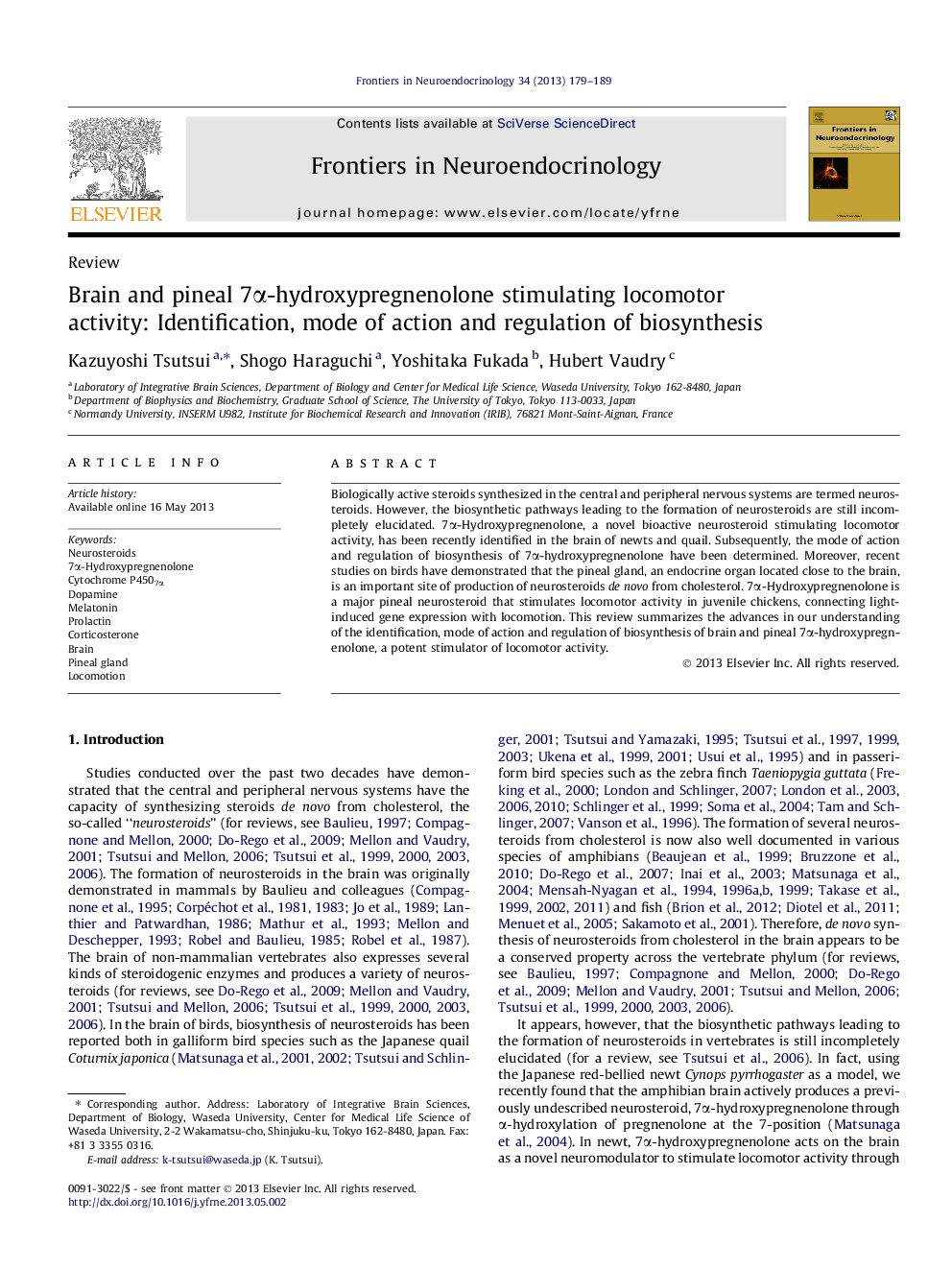| Article ID | Journal | Published Year | Pages | File Type |
|---|---|---|---|---|
| 2799336 | Frontiers in Neuroendocrinology | 2013 | 11 Pages |
•7α-Hydroxypregnenolone is a new key stimulator of locomotor activity in vertebrates.•Melatonin and prolactin regulate 7α-hydroxypregnenolone synthesis in the brain.•7α-Hydroxypregnenolone action in the brain is mediated by the dopaminergic system.•The pineal gland also produces 7α-hydroxypregnenolone light-dependently.•Brain and pineal 7α-hydroxypregnenolone contributes to the regulation of locomotion.
Biologically active steroids synthesized in the central and peripheral nervous systems are termed neurosteroids. However, the biosynthetic pathways leading to the formation of neurosteroids are still incompletely elucidated. 7α-Hydroxypregnenolone, a novel bioactive neurosteroid stimulating locomotor activity, has been recently identified in the brain of newts and quail. Subsequently, the mode of action and regulation of biosynthesis of 7α-hydroxypregnenolone have been determined. Moreover, recent studies on birds have demonstrated that the pineal gland, an endocrine organ located close to the brain, is an important site of production of neurosteroids de novo from cholesterol. 7α-Hydroxypregnenolone is a major pineal neurosteroid that stimulates locomotor activity in juvenile chickens, connecting light-induced gene expression with locomotion. This review summarizes the advances in our understanding of the identification, mode of action and regulation of biosynthesis of brain and pineal 7α-hydroxypregnenolone, a potent stimulator of locomotor activity.
